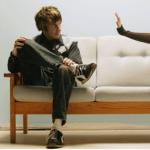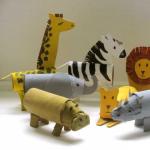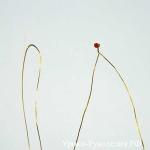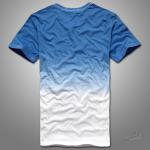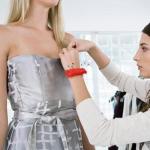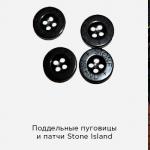The formation of the musculoskeletal system continues from birth until the age of 15, which is why it is so important for parents to pay attention to the slightest deviations in the child’s development and promptly contact an orthopedist.
The main orthopedic problems in children are:
- torticollis;
- hip dysplasia;
- flat feet;
- clubfoot;
- rachiocampsis.
Torticollis
If torticollis in an infant is caused by disturbances in intrauterine development, it can be detected as early as the 1st month of life. The acquired (bone) form of the disease develops already at school age.
Congenital torticollis (muscular) is usually diagnosed in the maternity hospital. If this does not happen, then the pathology is detected at 2-3 months in boys and at 4-6 months in girls (the development of the musculoskeletal system in girls is slower).
Muscular torticollis is associated with a developmental disorder or pathological spasm of the muscles on one side. It manifests itself clinically already at one month of age by constant turning of the baby’s head to one side. At 2-3 months. the head is turned and thrown back slightly; at the same time, they are turned to the sides of the shoulder blades.
By 5-6 months, asymmetry of the neck, face and shoulder girdles, curvature of the spine in the cervicothoracic region, and a pronounced turn of the head are already noted. Later develops. It is difficult not to notice these manifestations.
From the first weeks or months of life, installation (or habitual) torticollis may develop, associated with the child’s constant position in the crib. Sometimes the baby is carried on the same side in the arms. This kind of torticollis can be eliminated in a few weeks by placing the child alternately on different sides of the crib.
The earlier the pathology is detected, the more effective the treatment will be. Massage, therapeutic exercises, and physiotherapy (electrophoresis with lidase, paraffin applications) are prescribed.
If there is no effect from conservative therapy (more often this happens when torticollis is diagnosed at 6 months), rather complex surgical treatment is performed (after 1.5-2 years). If treatment is not carried out at this age, then after 6 years even surgery is not always effective.
Watch the video about this disease:
Hip dysplasia
It may not have clear manifestations in the first months of life and may not be diagnosed even by experienced orthopedists at the first examination.
Due to the weakness of the ligamentous apparatus, the head of the femur moves out of its normal position in the joint.
This may cause:
- preluxation: the femoral head moves freely inside the joint;
- subluxation: the head of the femur can dislocate from the acetabulum in the joint and return to it;
- true dislocation: the head of the femur is outside the joint.
Frequency of development of pathology: preluxation and subluxation occurs in 1 out of 100 newborns, and true dislocation occurs in 1 out of 800-1000 infants. Moreover, 60% of children with dysplasia are first-born, and 30-50% had a breech presentation (the highest risk of true dislocation). Maternal hormones before childbirth also contribute to joint instability.
Before 4 months of age, dysplasia is diagnosed using ultrasound, since the cartilage tissue of the femoral head is not visible on an x-ray before this age.
From the age of six months, you can notice the asymmetry of skin folds and different lengths of the baby’s legs.
Uneven length of limbs subsequently leads to a “duck” gait (waddling), lameness, walking on toes, and curvature of the spine.
Treatment should be prescribed by an orthopedist. Wide swaddling of a baby, with the help of which parents try to cope with the problem themselves, is not only ineffective, but can even lead to excessive stretching of the joint capsule, i.e. to improper development of the joint.
The optimal use is for 1-2 months. Pavlik stirrups or Freik splints. They help ensure the correct position of the femoral head in the acetabulum, the normal development of the femoral head and ligamentous apparatus.
The efficiency of stirrups reaches 95%. The timing of treatment is monitored using ultrasound.
If parents miss treatment time before 6 months of age, closed hip reduction is performed under anesthesia. Until 1.5 years of age, closed reduction is the main method of treatment.
At older ages, surgical treatment is performed.
Flat feet
All babies are marked at birth. By doing massage and gymnastics with the child, parents strengthen the muscular-ligamentous apparatus of his feet. By the year when the child begins to walk, you need to choose the right shoes to form a normal arch of the foot, formed by interosseous ligaments.
Shoes should have a small heel that raises the heel and helps strengthen and develop ligaments. Good fit of the shoe on the foot is also important. Shoes with open heels (flip-flops, sandals) are not recommended for children under 3 years of age.
Foot deformity in the form of flat feet is the most common pathology of the musculoskeletal system. It is the arch of the foot that provides shock absorption to the body when moving. There are 2 longitudinal and 1 transverse arches. Deformation of these arches leads to transverse or longitudinal flat feet.
There is also a congenital form (rarely occurring) of longitudinal flatfoot, as a defect of intrauterine development. It is diagnosed in the maternity hospital: the forefoot is “turned” outward, the sole has a noticeable convexity. Most often one foot is affected. Treatment consists of gradual correction of the defect using plaster casts. If there is no effect, surgical treatment is performed.
Children under 2 years old have a flat longitudinal arch. The role of a shock absorber is performed by a fatty “pad” on the sole. The process of foot formation continues up to 5-6 years. At this age, the presence or absence of acquired flat feet is determined.
Types of acquired flat feet:
- paralytic (consequence of damage to the nervous system, for example, with);
- rachitic (excessive elasticity of the ligaments with weakness of the foot muscles or exhaustion of the child);
- static (the most common, develops due to overload with excess weight);
- traumatic (after a fracture of the foot bones with damage to the ligaments and long-term use of a plaster cast).
At 3 years of age, the doctor can conduct a preliminary assessment of the foot and identify a tendency to develop flat feet or its initial manifestations.
Early signs of developing flat feet can be noticed by parents in a child from 2-3 years of age:
- rapid fatigue when walking for a short time (the child asks to be in a stroller or to be held);
- new shoes, after 1-2 months of wear, wear down along the inner edge of the heel or sole, the shaft is deformed inward).
The earlier flatfoot is detected, the more favorable its correction. Conservative methods include therapeutic massage and special exercises (rolling with the feet of a special roller, etc.), physiotherapy, and sea salt baths. Properly selected shoes also play an important role.
Clubfoot

This is a congenital deformity of a baby's foot. In this case, the foot is plantar flexed, adducted and turned inward. As the child develops, the deformity intensifies and the load on the outer edge of the foot increases, where calluses form.
Clubfoot ranks first among congenital pathologies of the musculoskeletal system and occurs in 1-4 newborns out of 1000; in 10% of cases it is combined with other developmental defects. More often there is a 2-sided anomaly, in girls it is 2-3 r. less often than in boys. In severe cases, deformation of the bones of the lower leg, ankle, knee and hip joints, and muscle atrophy subsequently develop.
Possible causes of congenital clubfoot:
- malposition;
- oligohydramnios;
- exposure to chemical hazards on the maternal body;
Congenital clubfoot is determined immediately after birth, the diagnosis is confirmed by ultrasound (the cartilage tissue of the foot is examined).
The earlier the treatment is carried out, the more successful it is.
The main methods of treating clubfoot:
- plaster fixation of the foot is used from 5-7 days of life, the bandage is changed every 2 weeks; its effectiveness is 58%;
- casting from 2 weeks of life using the Ponseti method: a special casting technique with changing bandages every 5-7 days promotes spraining of the ligaments; treatment lasts up to 2 months, after which the child is prescribed to wear special fixation shoes; the effectiveness of the method is about 90%;
- superelastic structures; Splints are made from a special material with shape memory, allowing for permanent correction;
- bandaging in combination with special gymnastics is used for mild defects;
- surgical treatment using various methods (if conservative treatment is ineffective, with late diagnosis);
- massage of the lower leg and foot (tonic and relaxing), as a component of complex treatment;
- kinesitherapy (active therapeutic exercises) or manual therapy aimed at increasing muscle activity and tissue stretching;
- physiotherapy to increase muscle extensibility and contractility, improve blood circulation; applied after 2 years;
- drug therapy: prescribing drugs that improve the passage of nerve impulses (B vitamins, proserin).
Spinal curvature
There are many reasons for its occurrence: hereditary predisposition, birth injuries, different leg lengths, etc.
With different leg lengths (a common pathology), it is necessary at an early stage to use orthopedic insoles, selected by a doctor, to align the pelvis, prevent the development of scoliosis and form the correct curves of the spine.
Already at 2-3 years of age, an orthopedist during examination assesses the correct posture and condition of the feet. Longitudinal flatfoot will lead to the development of static scoliosis in the future (curvature of the spine to the side), and transverse flatfoot will lead to static scoliosis (curvature of the spine in the anterior-posterior direction). The combination of both types of flat feet will cause kyphoscoliosis.
In addition, infantile (idiopathic) scoliosis can be detected in infants. It occurs less frequently than in older children. It is detected by pediatricians when examining a baby in a prone position: the spine has an arch, and the fossa on the back of the head is not in line with the intergluteal fissure.
But more often this pathology is detected at 5-6 months, when children sit confidently. It becomes noticeable that when the baby is sitting, his back is not straight, but his head is slightly tilted to the side. In these cases, the orthopedist will order an x-ray of the spine to rule out other causes of scoliosis.
Infant scoliosis can be corrected within 2-3 months with the help of therapeutic exercises selected by a doctor. It can be carried out daily by a physical therapy methodologist or a mother trained by him. In severe cases, exercise therapy is complemented by the use of a plaster “crib”, in which the child is placed at night and for several hours during the day.
The outcome of untreated idiopathic scoliosis varies: in some cases it resolves spontaneously, while in others the prognosis is very poor. The earlier infant scoliosis is identified and treated, the better the prognosis. Up to 2 years, the deformation may reverse its development, but self-healing rarely occurs. With the initial development of idiopathic scoliosis in children after 2 years of age, the prognosis is unfavorable.
The girls found a girl’s post on one of the forums about choosing children’s shoes. But it’s not the post itself that’s interesting, it’s the commentary.
prosthetist-orthopedist to him. I know that many of us worry about our children's feet. I highly recommend reading it.
A comment
prosthetist-orthopedist at the end!!!
Orthopedic surgeons and pediatricians recommend that parents of babies starting to walk purchase orthopedic shoes for their “first steps.” Orthopedic children's shoes contribute to the correct formation of the child's foot, correct gait and posture.
Experts explain that Properly selected children's shoes greatly contribute to the prevention of flat feet and prevent other foot diseases.
Flat feet- change in shape feet, characterized by drooping of its longitudinal or transverse arches (these are two forms of flat feet, they can be combined). All children under 2-3 years old have a flat longitudinal arch of the foot and this is absolutely normal, because The baby’s foot is just beginning to form and acquires “normal” shapes and contours by about 3 years. In an adult, the arches of the foot are normally concave and elastic; in a small child, in place of the arch there is a fat pad, giving the outline of a flat foot.
The foot is formed and acquires a classic appearance by the age of 5-6-7-8, sometimes later. Until the age of 5-7 years, while the child’s foot bones are forming, the diagnosis of “flat feet” is not made.
The baby may be diagnosed with plano-valgus feet (one of the most common diagnoses in children under 5 years of age) and varus feet. We can say that these diagnoses indicate a predisposition to flat feet.
Flat-valgus (x-shaped) foot placement– the heel is deflected outward, the foot is tilted inward. The inner edge of the shoe wears off with such deformation. Varus position of the feet (o-shaped), when the foot, on the contrary, is rolled outward (similar to clubfoot). The outer edge of the shoe wears off with such deformation. Such diseases are more common in physically weakened, often ill children, so first of all, parents should engage in general health promotion and hardening.
If the child is physically active, does not complain of pain in the legs, and the baby’s shoes do not wear out much on the inside or outside, then there is no need to worry excessively and in advance about flat feet. In many other countries, such diagnoses are not considered serious at all.
In addition to special orthopedic (preventive and therapeutic) shoes and insoles, Excellent prevention of flat feet are:
- walking barefoot on a hard-pile carpet, in summer on sand, small pebbles, grass and other uneven and non-smooth surfaces;
- massage paths (mats);
- cycling (if possible barefoot or in socks);
- climbing the Swedish ladder;
- massage and special exercises.
It doesn’t matter what kind of shoes you choose for your child, orthopedic or anatomical, for the proper development of the child’s feet, it is IMPORTANT that the shoes are light enough, comfortable and hold the foot well.
For the health of children's feet, the main thing is to choose the right shoes.
1. New shoes must be 0.5-1 cm longer than the foot(winter including a warm sock).
2. Shoes should fit the foot well, taking into account anatomical features, this can be achieved Velcro fasteners and laces. And kids quickly learn to unfasten and later fasten such fasteners on their own. Velcro is much more convenient than classic buckles and zippers for a child.
3. Has a molded hard back, it should be a single piece without seams or folds. For the little ones the backdrop should be high enough– this ensures good fixation of the foot.
If there is such a back and fasteners, the toe (toe) of children's sandals can be open. But it is still advisable to purchase shoes “for the first steps” with a closed toe (round!), because babies often cling, stumble, and bump their feet into objects.
4. Shoes should fit the foot, but not be too tight, this can lead to foot deformation; the toes should move freely.
5.The sole should be non-slip, with a slight heel lift(for children, the heel height is recommended 5-7 mm, for children over two years old 1-1.5 cm), the rise should occupy at least 1/3 along the length of the sole. In such shoes, the baby will not shuffle or fall over; this heel lift promotes even distribution of weight over the entire foot.
6. The sole material should be quite dense, but flexible in those places where the foot bends. That is, the sole should be rigid in the back and flexible in the toe, BUT do not bend in half! There should be no deep reliefs (patterns) on the soles of children's shoes.
7. Genuine leather is an ideal material for children's shoes. As an alternative, shoes with a textile upper and leather inside. Leatherette, rubber - very poor air permeability.
8. Interesting observation - shoes made of red leather and suede, even from well-known manufacturers, often get dirty when wet. Therefore, I don’t recommend bright red shoes for kids who might get caught in their pants. The dye can stain socks, tights and clothes if the baby squats.
If you still choose red boots and shoes, rub the skin thoroughly with a damp cloth (handkerchief); if there is a mark left on it, it means the shoes will get dirty.
Most parents (and I was once one of them) believe that the main thing in orthopedic children's shoes is arch support(sometimes incorrectly called a stinator). First of all, this the mound on the sole (insole) is correctly called the undersole. Secondly, real hard footwear can only be worn in corrective orthopedic shoes (selected as prescribed by an orthopedic doctor). By the way, if there is a hard arch in the shoe and it is not in place (for example, the shoe is too big), this is very bad and can seriously affect the formation of the foot. Thirdly, the arch support (pad-instep support) in conditionally orthopedic shoes is easily pressed and in most cases is not large at all, therefore it has a slight preventive effect.
In addition, there is an opinion that a large arch support (a high and hard arch) can interfere with the normal formation of the foot. In children, instead of an instep support, the function of a shock absorber is performed by a fat pad located at the site of the arch (arch) of the foot. The underliner must be soft and flexible so that it compresses and straightens under the pressure of the leg. The foot must work on its own and it must have an incentive to form correctly.
If you don't take into account the arch, most orthopedic shoes can actually be called anatomical. Therefore, when choosing shoes for your child, you need to look at the above points together: the correct bend of the sole, a molded hard heel, good fixation. The insole can be removable, have a multi-layer breathable structure, but in any case it (the inner surface of the shoe) should be practically flat, not counting the underliner; sometimes there is a rise along the outer edging of the insole. The insole may have curves, but should not be very curved.
Seleverstova Elena Aleksandrovna, member of the All-Russian Guild of Prosthetists and Orthopedists
(13.12.2010)
Dear Anna! I would like, as a prosthetist-orthopedist, to consistently comment on your materials regarding the correct selection of children's shoes by parents.
1. Surgeons and orthopedists should recommend orthopedic shoes to children only in cases of detected orthopedic problems. In other cases, children need regular shoes, but with design elements that protect children's feet from the development of pathologies.
2. Regarding your description of shoes for healthy feet, I basically have no questions. I will touch on 2 points: a) heels are rigid parts inserted between the upper and the lining in the back (heel) part of the shoe. In ordinary children's shoes, the boots can be of any height, but the heels in height should not exceed the height of the heels, even in children's shoes for the smallest children. The heels should provide good coverage of the heels, but should not be high so as not to force the Achilles tendon to work with excess tension when flexing the foot at the ankle joint. High, hard heels are needed exclusively in children's orthopedic shoes if the child has extremely sluggish or increased tone of the muscles and ligaments in the ankle joints; if the child does not walk from heel to toe, but on his toes or from toe to heel, as with cerebral palsy, i.e., if it is necessary to normalize the gait stereotype. But on the inner side surface of the shoe, the heels in regular shoes for children should be elongated to the beginning of the 1st toe. In combination with the correct fasteners, shoes with rigid, extended backs will protect children's feet from developing flat feet.
3. The next remark is perhaps the most significant. It refers to arch supports in children's shoes, so beloved by parents and some orthopedists. By the way, in formal terminology there is no concept of “conditionally orthopedic” shoes. Shoes can be either orthopedic or regular, i.e. not orthopedic. Ordinary shoes in their design can be more correct (choose options according to your taste: rational, preventive, anatomical) or less correct, which depends on the level of professionalism and level of conscientiousness of the shoe manufacturer. Orthopedic shoes are divided into low-complex and complex shoes. Before the development of capitalism in Russia, any orthopedic shoes were made according to patient orders. And that was right. Regardless of the severity of orthopedic problems, the manifestations of these problems are diverse and differ for each patient. Just as you cannot treat all diseases with one castor oil, you cannot recommend the same orthopedic shoes to all children. You correctly noted that a healthy child, in principle, does not need arch supports for the internal longitudinal arch in shoes. And if they exist, they should be very low and elastic-soft. Such instep supports will not cause harm, but will also be of particular benefit. But then you are talking about high and rigid instep supports, which are found in most models of mass-produced low-complexity orthopedic shoes. You are concerned that these arch supports are not always in the correct location. I would like to ask you: “What do you mean, in your opinion, ‘the sniper is in the right place?’.” I offer you and your parents an answer to this question. You are right, Anna, when you said that the most common orthopedic problem in children is planovalgus feet. You observe that your child’s heels deviate outward and their feet roll inward. I’ll tell you a secret: in a state of support (while standing and walking), the feet roll inward in the area of the articulation of the calcaneus, talus and navicular bones, i.e. anatomically - in the back!!! thirds of the feet This means that successful correction of the problem and the rehabilitation effect can only be achieved if you lift and support the foot in its rear third - with a rear arch support!!! department of the foot. And under the internal longitudinal arch, especially closer to the fingers, there should not be a high and rigid support. The human foot by nature has the ability to cope with impact loads due to the presence of a spring function. This spring function must be provided by a system of bones, muscles, ligaments and tendons, from which a longitudinal-transverse arch is formed, elastically working under the weight of the body. By roughly supporting the internal longitudinal arch, preventing its work, you can successfully achieve the opposite effect - the development of flat feet. By the way, as a rule, doctors do not initially diagnose children, especially toddlers, with “flat feet.” The movable apparatus of a child’s foot rarely shows signs of typical flat feet, when the foot falls from top to bottom under the weight of the body. In the vast majority of cases, children experience more dynamic manifestations of pathological conditions of the feet when walking. Observed: foot rolls inward or outward, abduction and adduction of the anterior sections relative to the posterior ones, raising the edges of the feet, etc. All these signs are observed in children in different variations and quantities. The behavior and positions of the right foot may also differ from the behavior and positions of the left foot. If you have any doubts about the orthopedic well-being of your child, be sure to contact an orthopedist and find a competent specialist. In my experience, the greatest effect can be achieved by using individual orthopedic insoles, made taking into account the specific problems of patients, in any correct shoes (regular or simple orthopedic).
Anna, the brands of shoes you named do not cause any complaints, although I repeat: “You should choose not a brand, but a specific model of shoes.” By the way, in your photo the child’s feet are wearing sandals that aren’t quite right. It is known that small children walk with a lot of emphasis on the first toe (look at where the insoles in children's shoes are most worn and dirty). The structures of the anterior sections in children are imperfect and work in excessively active motion. It would be much more correct to put on sandals for the baby, which, in addition to the clasp through the ankle joint, would have a clasp with one, or better yet, two straps along the back of the foot. By fixing the forefoot, you can significantly help the child master the process of walking and contribute to the correct development of the child.
Anna! This concludes the review of your article. I hope that you and your parents will find it not useless. I am ready to answer other questions on the topic.
Parents perceive the first steps of a child as a very joyful family event. But it can be overshadowed by the detection of such orthopedic pathology as hallux valgus. This violation usually becomes obvious just before the start of walking and after some time. The famous children's doctor and author of books on children's health, Evgeniy Komarovsky, talks about the causes of the problem and what to do in this situation.

About the disease
In medicine, valgus is a deformation of the feet in which they are in a cruciform position in relation to each other, reminiscent of the Latin X. Most often, the pathology becomes noticeable when the child tries to step on the feet and take the first steps - the pathology is expressed in the fact that when When walking, the baby rests on the inside of the foot.
Steps are extremely difficult for such a baby - he gets tired quickly, sometimes experiences pain, and the steps themselves are shaky and uncertain. Orthopedists describe this condition in terms of the processes occurring in the feet - the toes and heels are turned outward, the middle part of the foot is slightly lowered. If the legs are straightened and pressed against each other in the knee area, the distance between the ankle bones will be more than 3-4 centimeters. If the height of the arch of the foot is significantly reduced, then orthopedists will say that the child has planovalgus feet. Valgus flatfoot is considered the most common diagnosis in pediatric orthopedics.
There are two types of such curvature of the feet: congenital and physiological (acquired). In the first case, the legs are bent even during the period of intrauterine development of the fetus under the influence of certain factors about which medicine still does not know much. Congenital foot pathologies are usually quite severe, and they can be seen in the first 2-3 months of a child’s independent life.

Acquired deformity is often associated with errors in the development and functioning of the musculoskeletal system, ligaments, and tendons. It is precisely such violations that become obvious closer to the age of one year. At risk are babies with weakened muscles, premature babies suffering from rickets, who have suffered frequent and severe viral infections in the first year of life. The legs are at risk of becoming bent in obese children, since the load on the lower limbs with excess weight is very significant.
Sometimes parents themselves are to blame for the occurrence of pathology. Thus, putting the baby on his feet too early may well “trigger” the mechanism of foot deformation, and insufficient load on the foot, walking exclusively on a flat floor can cause acquired flat feet or planovalgus foot.
Flat feet scare parents no less. However, Komarovsky advises not to panic, because from birth absolutely all children have flat feet, this is a feature of babies. The arch of the foot will form gradually as the load on the legs increases, and here everything is in the hands of the parents, with the exception of congenital flat feet, which can only be corrected surgically.

Degrees of pathology
There are four main degrees of hallux valgus according to the severity of the defect and the severity of its course:
- First degree. The angle of deviation from the norm does not exceed 15 degrees. The pathology can be easily corrected using conservative methods.
- Second degree. The deviation angle is no more than 20 degrees. This condition can also be successfully treated with exercises, massage and physiotherapy.
- Third degree. Deflection angle - no more than 30 degrees. The pathology is difficult to correct, treatment is long, but with due patience and perseverance on the part of parents and doctors, the prognosis is very favorable.
- Fourth degree. The angle of deviation from normal values is more than 30 degrees. If conservative treatment is ineffective, surgery is prescribed.
Flat feet also have several degrees, which are similarly classified according to the degree of deviation of the arch of the foot from the norm. As in the case of hallux valgus, the first and second degrees of ordinary flat feet are treated quite simply and quickly. The third and fourth will be more difficult.

Diagnostics
The child is diagnosed by an orthopedic surgeon. This is done on the basis of a visual examination and prescribed additional studies, which include radiography of the feet, computer plantography, and podometry. If such studies are not prescribed, and the doctor diagnoses you accordingly, you should consult another doctor. Quite often, young patients with confirmed hallux valgus pathology are recommended to visit a neurologist to rule out problems with the peripheral and central nervous systems.


As soon as the causes that underlie the modification of the feet are identified, the doctor will determine the type of lesion by etiology:
- Static deformation. This problem occurs if incorrect posture is involved in the curvature.
- Structural deformation. Curvature of the feet, which has congenital causes. As a rule, the talus bone with such a deformity is positioned incorrectly with a deviation in one direction or another.
- Compensatory deformation. If a child has a shortened Achilles tendon, slanted shins, the foot will be functionally deformed when walking.
- Corrective deformity. Such a curvature occurs if the child was treated completely incorrectly or was not treated at all for ordinary clubfoot.
- Spastic nervous deformation. The reason for this curvature is the improper functioning of the cerebral cortex, which often results in spasms of the limbs.
- Paralytic deformity. Usually it is a consequence of encephalitis or complicated poliomyelitis suffered at an early age.
- Rickets deformity. Occurs with rickets.
- Consequences of injury. Pathology can result from ligament ruptures, fractures of the bones of the foot, ankle, hip and hip joint injuries.
When diagnosing flat feet, the same techniques and research methods are used.

Treatment
The child’s foot is finally formed only by the age of 12, so many problems found by specialists and parents themselves at a more tender age can and should be corrected before this moment, says Dr. Komarovsky.
Typically, treatment for both flat feet and hallux valgus is aimed at strengthening the ligaments, foot muscles, and forming the arch. For this purpose, foot baths, therapeutic massage, magnetic therapy, electrophoresis, swimming, and physical therapy are prescribed. In case of congenital pathology, the lower limbs are immobilized using plaster. If all these measures do not achieve the desired effect, the child may be recommended surgery.




If the defect is not treated and corrected, in the case of severe deformation, the child faces subsequent disability, since the increased load on the knee and hip joints causes deformation and destruction of them, which leads to irreversible changes in the functions of the musculoskeletal system.
Forecasts
The earlier the pathology is identified, the easier it will be to correct it. Medical statistics show that valgus curvature of the feet and legs, detected at one year of age and a little older, with appropriate therapy, has very favorable prognoses - the probability of eliminating the problem completely and forever is close to one hundred percent.
If the disease is detected late or the child, for a number of reasons, was not provided with the necessary medical care and the disease is advanced, in adolescence there is a very high probability of developing problems with the spine. The more time passes from the onset of the curvature to the start of treatment, the less chance of a complete successful recovery.

Shoes
Quite often, parents tend to blame themselves for their child’s foot problems. Mothers feel guilty that they may have chosen the wrong shoes for their child, which caused a violation of the anatomy of the foot . Evgeny Komarovsky reassures parents - deformation of the legs in no way depends on shoes. Since a person was originally born into the next world without shoes, they are not so necessary for him from a biological and physiological point of view.
However, with the help of special orthopedic shoes, some pathological changes in the foot can be corrected. Although Komarovsky does not advise relying entirely on the healing properties of expensive orthopedic shoes. They can have an auxiliary effect, but they need to be treated in other ways, and prevented through an active lifestyle, walking barefoot on uneven surfaces, running and jumping. The more active the child, the less likely it is to have acquired bowed feet or flat feet.


Most parents are interested in when they can start putting shoes on their child. Komarovsky says that there is no point in doing this immediately after the first steps. Let the baby walk barefoot for as long as possible - around the house, outside, if possible. Naturally, your child needs to wear shoes when going to kindergarten or for a walk in the park.
In case of severe hallux valgus symptoms, it is often recommended to buy insoles with arch supports, which prevent the foot from “falling” inward. These boots usually have rigid sidewalls that fix the foot in the correct position and a solid heel lock. Most often, such shoes have to be made to order, taking into account the degree of deviation from the norm, which is measured and described by an orthopedist.


You should not buy orthopedic shoes for your baby just like that, for prevention, just because the mother thought that the baby’s feet were positioned incorrectly.
When choosing ordinary everyday shoes, Komarovsky advises adhering to the basic rules:
- The shoes should be the right size, neither too small nor too big, and the child should be comfortable and comfortable.
- It makes no sense to buy shoes “for growth”, since the geometry of the foot changes as the leg grows.
- It is advisable that the shoes are not made of synthetic materials; the feet should “breathe”.
- Pointed toes and heels in children's shoe models are unacceptable.
From the very birth of the baby, any parents are concerned about the condition of his legs, will they be crooked, is everything okay with the feet, and will the baby walk well? If parents feel that there is something wrong with their baby’s feet, they begin to worry greatly, because the health of the foot largely determines the health of the entire skeleton, especially the spine, beautiful posture and the ability to move actively. Often parents compare the gait and legs of children with adults, and it seems to them that the child has problems with the feet and gait, and sometimes, on the contrary, parents prefer not to notice that the child is walking somehow incorrectly, attributing it to age-related characteristics and the formation of the leg. What is the correct line between normal and pathological when assessing gait, placing feet and deciding on foot deformities? Today we will talk about such a problem as plano-valgus feet in children.
What are plano-valgus feet?
Hallux valgus is a condition where the foot seems to be rolled inward, and if the child’s knees are tightly squeezed and straightened, a distance of more than four to five centimeters appears between the inner surfaces of the ankles. With this position of the feet, the toes and heel deviate towards the outer edge of the foot, and the inner arch of the foot seems to fall inward. As a result of valgus deformation of the foot, the legs acquire an X-shape, the knees sharply converge with each other at the inner edges. If valgus deformities of the foot are also accompanied by a decrease in the height of the arch of the foot, then we are talking about flat-valgus deformation of the feet in children. It is these types of foot developmental anomalies that are encountered in pediatric orthopedics and traumatology.
According to statistics, almost every second child under five years of age who sees an orthopedist and has abnormalities in the development of the feet is diagnosed with planovalgus deformity of the foot. In this case, the violations are accompanied by the following manifestations: the longitudinal arch of the baby’s leg becomes flattened, a valgus position is formed in the hindfoot, while the forefoot assumes an abduction-pronation position. Simply put, the foot becomes flat, the foot rolls inward, while the toes deviate to the side, which gives a specific appearance to the baby’s legs and gait. Most often, such an anomaly occurs in preschool or primary school age, although sometimes the diagnosis is made inappropriately when there are no problems.
Why is the appearance of the foot so important?
The special shape of the human foot was formed over centuries of evolution precisely in order to support him in an upright position, while distributing the load on the body, given that the weight of the human head in comparison with all other living beings is much greater. The bones of the foot are numerous, they are connected to each other by interosseous and very strong ligaments, which forms a fairly elastic and mobile arch of the foot, the role of which is to maintain the maximum possible shock absorption during movements - running, jumping, walking. The feet act as biological springs, preventing the body from shaking too much. The convex arch of the foot is oriented in two directions at once - longitudinal and transverse. Due to this, a normal adult foot has three points of support on the foot - in the area of the head of the first metatarsal bone (under the big toe), in the heel area and in the area of the fifth metatarsal bone (under the little toe).
Children's arches at birth are not similar to those of adults; their feet are flat, without arches or bulges, and when the child takes his first steps, his feet are still quite flattened, so the child's gait is uncertain and it is difficult to maintain balance. During the first steps, a fairly large load is placed on the baby’s feet, which later allows the child to learn to walk and form a normal arch of the foot. Parents should remember that there is no need to panic because the child’s gait in the first years of his life is not ideal - his foot is still growing and forming, and it is impossible to draw conclusions that “we have flat feet” or “we have club feet.” This is incorrect from the point of view of age anatomy. A confident gait and correct arch of the foot will develop in the child gradually; there is no need to immediately give up on the child in terms of his future capabilities or run to the store for corrective shoes.
Usually, parents' complaints that something is wrong with the child's legs arise from the child's first attempts to walk. But at this age, it is necessary to clearly distinguish between such a phenomenon as the physiological flattening of the area of the arch of the foot, especially if this is a child under three years old, the development of the actual flat-valgus bevel of the foot, which will require observation and correction by an orthopedic doctor. Until the age of about three years, there are special fatty pads on the area of the child’s feet, and therefore, if you look at the baby’s foot, its arches will not be very visible. The arch of the foot will be contoured if you ask your baby to stand on his tiptoes. Bone tissue in the foot area will form in a child until about five or six years of age, and therefore only at this age does it make sense to talk about whether or not the child has a foot deformity, especially its flat-valgus form.
However, it is worth noting that there are congenital anomalies of the feet with a strong flat-valgus deviation, and then the diagnosis of valgus feet is made from the hospital, there is a vertical talus, an anomaly of intrauterine development of the foot. But these foot abnormalities are visible to the naked eye and they are present immediately from the very beginning. What is bad about flat-valgus feet besides the immediate cosmetic defect? First of all, they lead to a negative effect on the spine and its curvature, constant pain in the legs and the formation of early osteochondrosis and arthrosis in the affected joints. This significantly limits the quality of life of such children and their future choice of profession.
Causes of this foot abnormality
Valgus foot deformity can be congenital or acquired in a child. In the case of a congenital form, the leading factors are usually unfavorable factors affecting the development of the shape and relative position of the bones in the top, and then hallux valgus foot deformities can be diagnosed either immediately at birth or in the first months of the baby’s life. The most severe and truly congenital forms can be considered the “vertical ram” foot and the “rocking foot”. The acquisition of a hallux valgus shape in childhood is associated with imperfections of the ligamentous and tendon apparatus, and deviations in the formation of the baby’s musculoskeletal system. Typically, these deviations begin to be detected in children no earlier than one year, when children attempt to walk independently without support.
Valgus deformities of the feet usually develop in weakened children with diffuse muscle hypotonia. The causes of such hypotension may be prematurity of the baby or previous intrauterine hypotrophy, hypoxia, and it may also be the result of congenital weakness of connective tissues, with frequent illnesses at an early age, especially if these were ARVI, pneumonia and bronchitis. A special role in weakening the musculoskeletal and ligamentous apparatus is assigned to such a disease of children as rickets. Also, a disturbance in the dynamic and static relationships of muscles and ligaments occurs in such pathologies of neuromuscular transmission as polyneuropathy, cerebral palsy, poliomyelitis and myodystrophy. Hallux valgus in children at an early age can be the result of overweight and obesity, which leads to pathological stress on the foot due to body weight.
In some cases, hallux valgus in the foot area in children can be the result of injuries to the muscles, ligaments or bones in the lower leg and foot, or prolonged immobilization of the leg with a plaster or bandage. Even less often, such valgus deformities occur in children with dysplasia and congenital dislocation of the hip. And also - and all parents need to pay attention to this, the reasons for hallux valgus in babies can be the early start of walking, when parents put children on their feet at almost 5-6 months and lead them by the hands, imitating what the child supposedly wants walk! Poor-quality shoes for the first steps that are too soft and poorly secure the foot can also affect the formation of hallux valgus.
If a child’s muscle tone is weakened, and he is also put on his feet and forced to walk, under the weight of his own weight the arches of the feet are flattened and weak ligaments are greatly stretched, the foot remembers this pathological position, the ligaments in the tibial muscle area are weakened, the ligaments in the toe area are weakened on the foot. And after such forced loads, the foot can no longer form correctly. Think about this before you put your child on his feet and lead him by the arms and supposedly “walk.” With hallux valgus, the foot in children moves inward, toward the ankle joint, while the heel and toes turn outward.
This verdict from doctors is upsetting for most parents: the child’s beautiful gait is at risk. Ah, if we were talking only about a cosmetic problem... Unfortunately, flattening of the arch of the foot is a serious and insidious pathology that can affect almost the entire musculoskeletal system. How dangerous is this disease? How to recognize it? And is it treatable?
Unfortunately, flat feet are one of the most common deviations from the norm in the development of the musculoskeletal system. Here are disappointing statistics: out of 1.5 million children in the city of Moscow, it was detected in 9 thousand children. And approximately 2 thousand young patients complain of pain in their legs. First of all, let's figure out what is meant by this pathology?
Flat feet is a deformation of the foot in which the arch of the foot is lowered (flattened). To better understand the nature of the disease, let's look at some anatomical features of the foot. In the process of evolution, it acquired a shape that allows it to evenly distribute body weight. The bones of the foot are connected to each other by strong interosseous ligaments (these are fibrous formations of connective tissue, presented in the form of a bundle connecting the bones) and form its arch, which provides shock absorption during walking and running. Convex arches are oriented in the longitudinal and transverse directions. Therefore, the foot of an adult normally rests on three points - the calcaneal tubercle, the head of the 1st metatarsal bone and the 5th metatarsal bone. There are two longitudinal and one transverse arches of the foot. The inner and outer arches form the longitudinal arch of the foot, and the front arch forms the transverse arch. Depending on their deformation, longitudinal and transverse flat feet are distinguished.
With longitudinal arches, the outer and inner arches of the foot are flattened, its length increases and almost the entire area of the sole is in contact with the floor.
With transverse, the transverse arch is flattened, the forefoot fan-shaped and rests on the heads of the five metatarsal bones.
All children under two years of age have a flat longitudinal arch of the foot. Experts consider this condition to be physiological, because the bone tissue in babies is soft and elastic. It contains few minerals, which give bones strength, and the muscular system is not well developed. When children begin to stand on their feet (at 7-9 months) and walk independently (at 10-12 months), the “fat pad”, which is located on the sole, under the skin, takes on the function of a shock absorber.
At 2-3 years, the bones gain a sufficient amount of minerals, the articular surfaces acquire normal shape, the ligaments become stronger, and muscle strength allows you to stay on your feet longer. The process of formation of the bones of the foot continues until approximately 5 or 6 years of age. Only during this period can we talk about the presence or absence of flat feet in a child.
When to go to the doctorPerhaps all parents understand that preventive examinations by specialists are not a whim of doctors, but a necessary measure. The main thing is not to miss the time to visit the doctor. An examination by an orthopedist is carried out:
Ideally, from this age on, you should visit an orthopedist with your child every year so as not to miss the development of flat feet. Parents need to be prepared for the fact that the orthopedist (if he doubts the final diagnosis) will refer the little patient for additional examination to a consultative and diagnostic center. If the child goes to kindergarten, this problem goes away by itself - preschool children in child care institutions are examined quite regularly. But if a child grows up at home until the 1st grade, parents should remember the date of the medical examination. Children who are found to have flat feet are monitored by an orthopedist until they are 14-15 years old. During this time, they undergo courses of physiotherapy, therapeutic massage, are sent to sanatorium-resort treatment, and, if necessary, special orthopedic shoes are made for them. |
If the diagnosis is confirmed
Most often, longitudinal flat feet occur in children. It can be congenital or acquired. The congenital form of the disease is rare and is a consequence of intrauterine malformations. It is already detected in the maternity hospital. In most cases, one foot is affected, but sometimes both are affected. This pathology is very noticeable in children: a convex sole and the forefoot “turned” outward. Treatment is carried out from the first days of the child’s life: the deformation is gradually corrected using plaster casts. If this does not help, they resort to surgery.
As for acquired longitudinal flatfoot, it can be:
- Traumatic.
Occurs after fractures of the bones of the foot and ankle. Partial or complete damage to the ligaments during such an injury, as well as the child’s prolonged stay in a plaster cast, contribute to the flattening of the arches of the feet.
- Paralytic.
Occurs due to disorders of the central or peripheral nervous systems (more often - consequences of polio 1).
- Static.
This is the most common form of pathology. It occurs due to overload with a significant increase in body weight, usually with obesity and endocrine disorders.
- Rachitic.
Occurs when there is excessive elasticity of the ligaments and weakening of the muscles of the arches of the foot. The cause may be a lack of vitamins and microelements - with 1 or general exhaustion, as well as with congenital pathology of connective tissue.
So, the foot turned out to be deformed. What happens in the body? The ligaments send “signals” to the nervous system about trouble in this “area”. In response, the muscles receive an “instruction” to enter into a “fight” with the deforming forces - that is, to tense up as they should. But they are not able to withstand such a load for a long time, so they quickly become exhausted, relax and stretch. And the deforming force continues to act now on the ligaments. Soon, stretching occurs in them (especially if there is a congenital pathology of the connective tissue), since without muscle support they cannot work for a long time. Now all the load falls on the bones. When they cannot stand it, deformation from compression begins. By this time, the ligaments finally “fail” and the deformation enters the final, irreversible phase. The gait loses its plasticity and smoothness. Children often complain of fatigue when walking, pain in the ankle joints or lower legs, and often in the lower back. Some cannot clearly identify where exactly they experience discomfort or pain, so they do not complain, but simply prefer calm, less active games. A deformity of the ankle joint appears (it is also called valgus or X-shaped). If one or more of these signs are present, consultation with an orthopedic doctor is necessary.
Sometimes a foot deformity can exist for many years (until adulthood) without showing itself in any way. But sooner or later, deterioration will occur, since the body’s compensatory capabilities are not limitless.
In a child 3 years old (but not earlier), an initial diagnosis of the pathology can be made using the most common method - plantography (footprint). This is easy to do at home. A blank sheet of paper is placed on the floor, and the baby stands on it with both feet. It is better that the soles are wet, then their clear imprint will remain on the paper. At the same time, the torso must be kept straight, legs together. The outline of the feet in this position is outlined with a pencil. Then a straight line is drawn perpendicular to the contour line, crossing the entire narrow part of the foot. The mildest degree of deformation is the first. Well, the heaviest and most serious is the third.
X-rays are not taken for children at this age. Firstly, the bones of the foot have not yet fully “matured”, the cartilage tissue is not visible on an x-ray and it is difficult to assess the true height of the longitudinal arch. And secondly, this diagnostic method is quite harmful for a child, so it is performed only for serious indications and more often after 9 years.
Only to eliminate severe pain is it permissible to use painkillers.
Treatment of flat feet
Unfortunately, one cannot count on complete relief from flat feet, especially with advanced pathology. But you need to be treated carefully, regularly and conscientiously. The earlier the signs of the disease are identified, the smaller the foot deformity, the more favorable the conditions for stopping the progression of flat feet and its correction.
At the initial stage, pain in the legs can be eliminated within 1-2 months through warm daily foot baths with sea salt, manual therapeutic massage and gymnastics. As for the baths, the requirements for them are simple: water temperature is +40-50 "C, the duration of the procedure is 15-20 minutes, and the proportions of their components are indicated on the packaging and vary depending on the concentration of dry matter.
Self-massage will have a very beneficial effect - fortunately, there are many devices for it (special mats, rollers, balls). Exercises with them are performed arbitrarily (walking on a massage mat, rolling a massage roller with your feet, etc.). As a result, blood circulation improves and muscle tone normalizes. It is better to do gymnastics in the morning, when the muscles are not yet tired. It is better to show the technique and pace of exercises (see gymnastics) to the child by example. The room should not be stuffy or drafty, and the child should exercise in comfortable clothes that do not restrict his movements.
Therapeutic massage must be carried out by a certified specialist - an instructor in physical therapy and massage.
In the treatment of flat feet, physiotherapy (paraffin-ozokerite applications, electrophoresis, etc.) is often used, which improves metabolic processes and blood circulation in the tissues and indirectly strengthens the arches of the feet. Massage and physiotherapy are prescribed in courses, usually 10-15 procedures. It is advisable to conduct 2-3 courses per year.
Choosing shoesThe “culprit” of acquired flat feet may be incorrectly selected shoes. As soon as the child starts to stand up, it’s time to buy him his first boots. This usually occurs between 7-8 months. The criteria for “correct” children's shoes are clearly defined. The first shoes should:
|

"Magic" insoles
A special role in the treatment and prevention of progression of flat feet is given to orthopedic insoles, which are prescribed already at the first degree of pathology. They help relieve painful areas of the foot and correct identified deformities at the initial signs of flat feet. The height of the arches of the feet in the insoles depends on the degree of flattening. You need to invest them in street and indoor shoes to make life easier for the baby when he is on his feet for as long as possible. As the child grows, the shape and size of the insoles need to be changed. And here you cannot do without repeated consultations with an orthopedic doctor. It is best to purchase insoles from prosthetic and orthopedic companies, orthopedic centers, or order them individually.
Only in this case are such products guaranteed to meet the required standards. And one more thing: you shouldn’t use orthopedic insoles “just in case.” If you wear them constantly without an objective need, the arches of the feet will become relaxed, and flat feet can develop even in a child who is healthy from an orthopedic point of view.
If the baby has third degree longitudinal flatfoot, especially in combination with valgus deformity of the ankle joint, the matter will not be limited to insoles. He will have to “show off” in orthopedic shoes - boots with laces and rigid internal lateral support for the foot.
Gymnastics for flat feet Complex 1Starting position: sitting on a chair, feet on the floor. Curl your toes. Repeat 3-5 times without lifting your heels from the floor. Alternately lift your feet towards you (3-5 times). At the same time, turn your feet onto the outer edge (3-5 times). Alternately lift only the big toes (3-5 times). Lift all your toes one by one, with your feet slightly turned inward and do not lift your heels off the floor (3-5 times). Complex 2Starting position: sitting on a chair, feet on the floor. Run the big toe of your right foot along the front surface of the shin of your left leg from bottom to top (3-5 times). Repeat the same with the big toe of your left foot (3-5 times). You can complicate the exercise and try to pull the knee socks onto the shin of your left leg with the big toe of your right foot. Then change legs. Complex 3Starting position - sitting on a chair, one foot on the ball, the other on the floor. With your foot on the ball, swing it left - right, forward - back, (3-5) times. Change legs and repeat the exercise. Next, grab the ball with your feet and hold it suspended for several seconds, lower it to the floor, and then lift it again (3-5 times). Complex 4Starting position - sitting on a chair. You can put a piece of fabric, small objects (checkers, elements of a children's construction set, river pebbles, etc.), or a rolling pin under or near your feet. Task: gather fabric with your fingertips, grab and move small objects, roll a rolling pin, or with all your feet. Complex 5Starting position - standing. Stand on your toes (rise on your toes) (3-5 times). Turn your feet inward (3-5 times). Walk in place. Walk forward on the outer edges of your feet. Walk along the line. Complex 6Starting position - standing. Squat without lifting your heels from the floor (3-5 times). If possible, walk on rungs or walk on uneven, bumpy surfaces. You can also balance on a ball. (Attention! Adults must insure the child!) Complex 7Starting position - standing on a block placed on the floor. Squat on a bar (3-5 times). Stand on the block either on your right or left foot. In this case, the feet should be placed across and then along the bar. You can also walk several times with side steps across the block and walk along it. |
Complications
What are the complications of flat feet? Unfortunately, very different. First of all, this is a flattening of the transverse arch of the foot with subluxation of the 1st toe outward in adolescence. If the foot has been in an incorrect position for a long time, and especially if there is a valgus deformity of the ankle joint, this can lead to deformation in the joints of the foot and even to a change in the ratio of the articular surfaces of the knee and hip joints. This is accompanied by pain in the legs, especially in the evening, and a decrease in shock absorption functions leads to pain in the spine. In the future, this can lead to, that is, an arched deformation of the spine to the right or left, or to its curvature with the formation of a posterior convexity - kyphosis.






